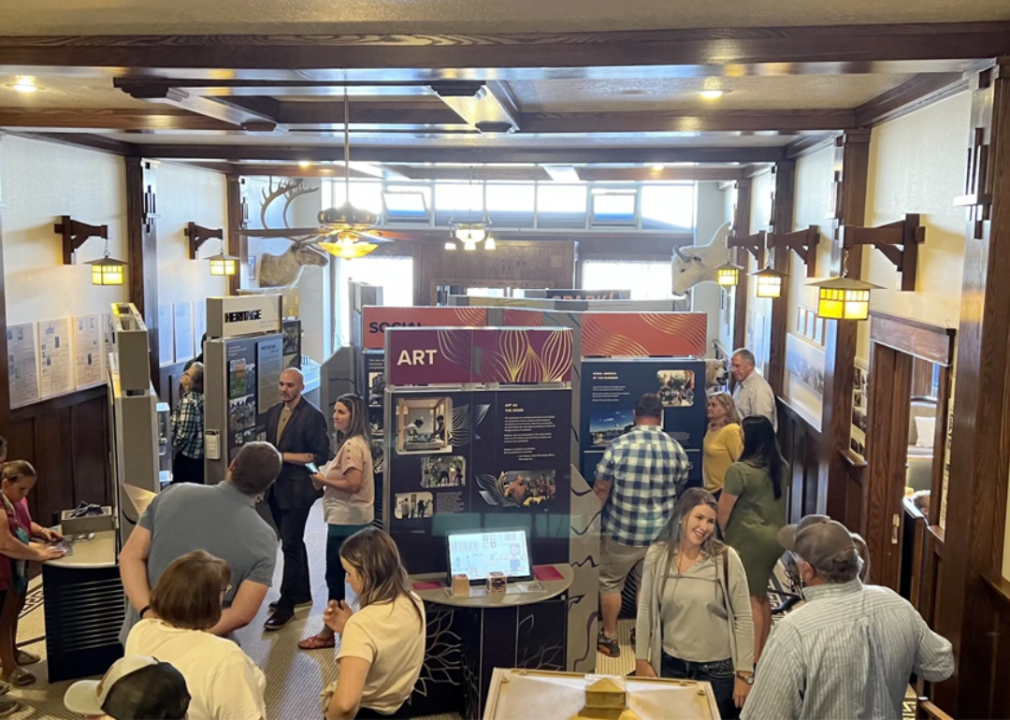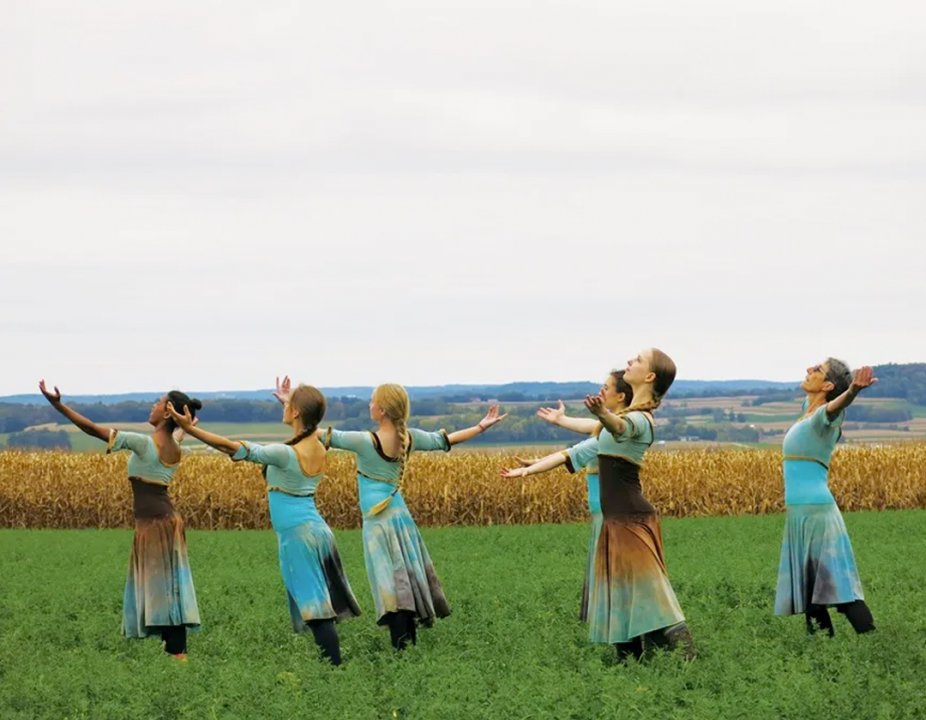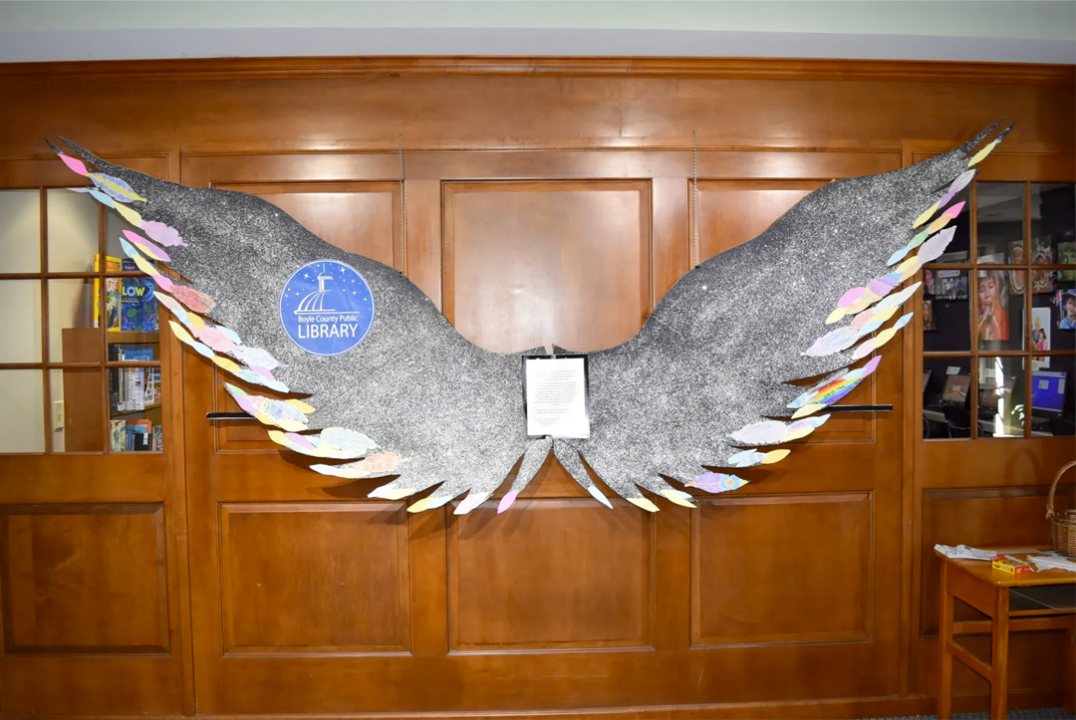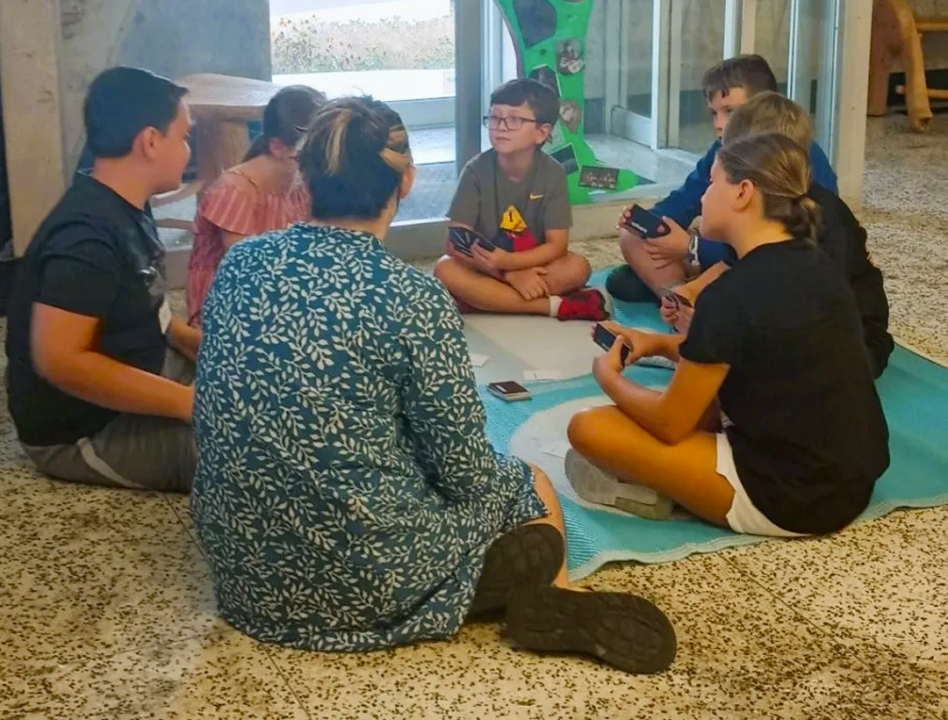The Smithsonian is coming to town

Idaho Humanities Council via The Daily Yonder
The Smithsonian is coming to town
Opening night of the “Spark!” exhibit in Soda Springs, Idaho.
Visiting the new Smithsonian Museum on Main Street exhibit, Spark! Places of Innovation, reading and hearing and viewing story after story of communities being bold and innovative in so many ways, was nothing less than inspiring. Framed in the exhibit as critical hotbeds of invention, numerous small towns and rural places are celebrated for their “self-reliant creative traditions.”
Spark! highlights a range of community-led initiatives: artistic, social, technological, and cultural. The 2005 community-built broadband network and business development hub of Independence, Oregon, (population 9,842). The collaboration of organizations in Lewisburg, Pennsylvania, (population 5,723), that reclaimed a downtown industrial ruin into a community arts venue called “The Piers.” The yogurt company founded by Turkish immigrant Hamdi Ulukaya in New Berlin, New York, (population 2,682), called Chobani.
The Smithsonian displays also ask thought-provoking questions like, “What does it take for a community to be innovative?” and, “Can you rebuild an ‘ownership economy’ after the big companies are gone?” They tell of challenges transformed into opportunities, creative solutions that make life better in a myriad of ways.
Museum on Main Street (MoMS) is the Smithsonian’s premier program for small towns. For almost 30 years, MoMS has brought rural communities high-quality museum exhibits in partnership with the Federation of State Humanities Councils. The 14 themed exhibits have toured more than 1,900 communities in all 50 states and the territory of Guam. While the median population of host communities is 8,300, no place is too small: Folsom, New Mexico, hosted an exhibit in 2010, when the population of the town was 67.
According to the Smithsonian, 52% of cultural organizations are located in small or rural communities. 82% of these organizations operated with budgets of less than $25,000. The idea for a program to intentionally serve these places emerged from a 1991 survey.
“It revealed that rural museums in particular were struggling to do exhibits and collections management,” MoMS staff member Tiffany Cheng explained in an interview with The Daily Yonder. “We fill that gap to help small cultural institutions find resources, do more cultural programming, and celebrate their local story. From that, a host of good things have happened over the years in a ripple effect.”
![]()

Courtesy of Wormfarm Institute via The Daily Yonder
Envisioning national and local exhibits
“Spark!” shares about Wormfarm Institute’s biennial Farm/Art DTour in Sauk County, Wisconsin. The event brings artists and farmers together in a celebration of the connection between land and people.
Photo: “Spark!” shares about Wormfarm Institute’s biennial Farm/Art DTour in Sauk County, Wisconsin. The event brings artists and farmers together in a celebration of the connection between land and people.
Thanks to their small size and low cost, the MoMS exhibits make a Smithsonian experience available to small communities. The size needed to host a display is only 750 square feet, and they have been housed in museums, libraries, city halls, nature centers, and community colleges. Since its inception in 1994, MoMS exhibits have focused on food, labor, democracy, music, change, water, sports, and immigration. New topics are decided in consultation with state and local partners to determine what stories they are excited about sharing.
Each exhibit is produced by a team of scholars, designers, writers, multimedia editors, and fabricators pulled together by the Smithsonian. They take two to three years to complete. Four copies of each exhibition are on the road at the same time, and state-level partners reserve them for a year. Humanities councils select the six or seven host sites for the state tour. After a couple of years, exhibits are retired and new ones introduced.
Host communities are selected at least a year in advance so they have time to create accompanying exhibits and programming that focuses on how the larger theme connects to the local story. State humanities councils provide support for this work, offering planning meetings, identifying state and local scholars, granting funds, and assisting with publicity. These efforts, usually at low cost or free for hosting sites, make the program accessible for even the smallest cultural institutions.
“It’s definitely gone beyond just providing an exhibition,” said Cheng. “We’re providing tools and resources for an experience and really enabling the local communities to do their own storytelling and to celebrate that.”
Chestertown, Maryland, population 5,532, lifted up local stories around the The Way We Worked exhibition, which was displayed in one of two surviving African American Grand Army of the Republic buildings in the U.S. As organizers explored the intersection of the history of work and race, one outgrowth was the creation and production of a new musical about African American labor experiences in the county.
I went to see Spark! at Boyle County Library in Danville, Kentucky, (population 17,240). This “city of firsts” is proud of its own history of innovation in government, education, and medicine. To complement the Smithsonian displays, the library gallery featured an innovative local artist who creates intricate sculptures out of high density foam. The exhibit also sparked an inventor/invention expo for students in grades K-12, a temporary maker space, and a series of wing murals introducing people to innovative businesses and community organizations.
The underlying premise for these local additions is that each place has a unique history and culture worth celebrating. “I 100% recommend this program to other small towns,” said Christina Farrell, Adult Service Manager at the library. “It has been a wonderful experience.”

Kim Kobersmith for The Daily Yonder
Fostering engagement
Boyle County Public Library and its community partners developed a series of wing murals called “Take Flight” to celebrate local innovation.
MoMS exhibits share national and local stories about important rural issues, and they are designed to foster more than enjoyment. They are catalysts for important conversations and community engagement.
David Pettyjohn worked in Oklahoma Humanities for 11 years and was instrumental in bringing the first MoMS exhibit to the state. Journey Stories featured tales of immigration and migration, both good and bad, including the Trail of Tears. Its first stop in the state was the Creek Nation Council House.
“The exhibit was an opportunity to talk about painful histories within our country,” said Pettyjohn in an interview.
A national Youth Innovation in Rural America grant, given to two Spark! sites, inspired Kentucky Humanities to create its own version. Youth from each host community gathered for a Problems and Solvers game, then received a small grant to jumpstart a community solution. Owensboro teens, recognizing the high school transition can be a challenging time for mental health, developed a mentorship program for 8th-grade students. Boyle County youth identified a lack of relaxed gathering places. After a successful “3rd space” event in June, they are looking for a permanent location.
“By giving the students a chance to come together to identify problems, develop solutions, and start solving them, we hope they will see themselves as solvers of community problems,” said Kathleen Pool with Kentucky Humanities.

Kentucky Humanities via The Daily Yonder
Building community capacity
Participants in the Youth Innovation in Rural America program at the Yes! Arts center in Frankfort, Kentucky, learn about being problem solvers.
Host communities are encouraged to capitalize on the fact that MoMS is part of the Smithsonian. The iconic name is widely recognized and respected, and post-exhibit studies show communities benefit from the experience long after the displays have gone.
Cheng said host institutions have leveraged their MoMS exhibits to improve the storage of their artifacts, digitally catalog their collections, and increase their pool of volunteers. Nearly 60% of past venues saw an increase in their membership base, and 87% reported an increase in attendance due to the exhibitions and associated programming.
“I have always believed this program is more than just an exhibit, but an awesome opportunity for Smithsonian to come to your town,” said Pettyjohn. “It is about capacity building and can change an organization’s path.”
Pettyjohn, who now works at Idaho Humanities, has seen that transformation firsthand. Priest River, Idaho, population 1,696, hosted The Way We Worked in a partially restored historic building in the early 2000’s.
The exhibit was a catalyst for completing structural renovation, generating local interest and financial support. Now the building is a downtown anchor with offices and a coffee shop – and serving as host for the Spark! exhibit.
Wayland, Kentucky, population 258, used the interest they garnered from having Hometown Teams: How Sports Shape America to create the Mountain Sports Hall of Fame. The former high school gym was converted into a small museum featuring the legendary high school basketball players from surrounding counties.
“The coordinator still calls to say how much we did for their museum,” said Pool. “Bringing in the Smithsonian really gave them the boost they needed.”
The Museum on Main Street program cements the Smithsonian’s commitment to serve America’s small towns. Its exhibits reveal thriving places brimming with passion and creativity, the kind of rich rural stories that aren’t told widely enough on the national stage.
“The MoMS exhibits provide a focal point where everyone can come together for a shared experience,” said Pettyjohn. “The humanities are all about stories that help us understand what it means to be a human being. This program is one of the critical ways I have seen to share them.”
This story was produced by Daily Yonder and reviewed and distributed by Stacker Media.
